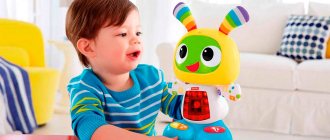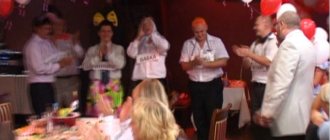Assessment of the premises and stages of repair
Rough work. No matter how you decide to decorate the walls, floor and ceiling, you first need to dismantle the old decoration, remove the wallpaper, old floor covering and level the walls.
Leveling the walls is a necessary and obligatory stage of repair, because then the coating lies on the walls and floor more evenly, the joints are not visible, and it is easier to attach decor that fits evenly to the wall, such as shelves.
To sleep sweetly
The flow of information directed at children is enormous. Musical, sports activities and walks alternate. You need quality rest to relax and take your mind off active activities.
For finishing and interior design, environmentally friendly materials, mainly natural, are selected
The bedroom is decorated in soothing pastel colors
The bedroom traditionally has a special cozy atmosphere. When creating it, adhere to the following rules:
- soft lighting;
- use textiles of the same color range, which does not irritate the eyes;
- bed linen is chosen in delicate shades; for pupils of older groups, sets with plot pictures are acceptable;
- there should be no bright images on the walls or ceiling; there may be fairy-tale or cartoon characters (it’s good if they are getting ready for bed, this will become a kind of positive example for children);
- When painting walls, soothing warm colors are preferred, which will help you calm down and fall asleep quickly.
Thick curtains are hung on the windows to darken the room during the daytime.
The material for the curtains is selected to match the style of the room
Finishing materials in the interior of a kindergarten, textiles, and furniture must be environmentally friendly and comply with safety standards. To darken the room, hang thick curtains made from natural fabrics and carefully fasten them. The walls are decorated using mosaics, stained glass, three-dimensional applications, and removable stickers. There is not much furniture; these are cribs appropriate for the age and height of the children. To determine each child's sleeping place, plot pictures are placed on the headboard.
The bedroom should have a calm atmosphere that helps you fall asleep quickly.
See alsoDesign of a modern hairdressing salon, photo.
Assessing the size and shape of the room
Sometimes, in pursuit of an idea, designers or apartment owners forget about the size of their premises. A huge ship bed in the middle of the room is of course very cool, and this is a children’s bed in a nautical style, but where is the desk that will be needed next year, where is the correct distance to the TV, so necessary at such a young age.
Some tips for rational planning
- For the children's room, choose a room in the middle of the apartment, where the walls will be adjacent rooms of your apartment, and one borders the street. This way the child will be comfortable and warm.
- The optimal nursery area for one child is 8-10 m2, for two children 12-15 m2.
- The presence of a window is mandatory, but a balcony, although glazed, is a source of danger.
- Divide the room into 3 zones - a sleep zone, a play zone and a work zone. It is important that they overlap, for example, in style, but also exist separately, without mixing study and games.
- Sleep area. A bed opposite or near a window will allow your baby to wake up easily in the morning and be alert all day long. A bed or sofa should be selected not only taking into account the height and weight of the baby, but also taking into account the fact that the child is growing.
- Game Zone. Try to make the free area spacious so that the baby feels comfortable and realizes all his imagination.
- Work zone. The main point in the work area is lighting. It is better to place the table at which the child will study and do homework by the window or consider a spot light. The table and chair should be comfortable, taking into account the child’s build.
- TV. If you plan to have a TV, DVD, or game console in the room, then keep in mind that the screen should be at least two meters from the child and preferably in front of the eyes.
If some recommendations cannot be followed in your living conditions, do not be discouraged, rely primarily on the comfort and safety of your child.
Project for arranging a kindergarten group “Across the seas, along the waves...” project (senior group) on the topic
Possibilities of socialization of preschool children in a subject-spatial environment.
The development and adoption of a federal educational standard for preschool education ensures recognition of the significance and weight of preschool childhood, but at the same time entails increased requirements for the quality of preschool education. One of the important tasks is the development of the personality of preschoolers. Everything that surrounds a child shapes his psyche and is the source of his knowledge and social experience. This forces us to take a fresh look at the problem of organizing the subject-spatial environment and create conditions for pupils that would contribute to their successful socialization and the formation of the foundations of the basic culture of the child’s personality.
After analyzing the developmental environment in the group, observing children in independent activities, we came to the conclusion that the created educational space meets many modern requirements, but the developmental environment needs to be refined and replenished, so we set ourselves the following tasks:
- enrichment of the subject-spatial environment with attributes, games and toys in accordance with the requirements of the Federal State Educational Standard
- arrangement of space in the group, providing the child with the opportunity for self-development and various independent activities.
Socialization is carried out mainly through communication. The child gradually takes on a role in society and learns to behave in accordance with the requirements of society. In order for the subject-spatial environment in the group to have all the qualities that contribute to the full development of the child, it is important to take into account the characteristics of the children, their age, and correctly zone the room. For this purpose, we created various centers in the preparatory group: games, recreation, outdoor games, training. We installed furniture and play equipment so that each child could find a convenient and comfortable place for joint activities with both an adult and a peer, and independent activities.
As you know, the main form of work with preschoolers and the leading activity for them is play. All children are different and each preschooler has the right to his own path of development, therefore, in order to realize the individual interests, inclinations and needs of preschoolers, we organized the “Center for Role-Playing Games”. The games and attributes located here help to form the foundations of a culture of communication in children. While playing, children consolidate knowledge about the surrounding reality and life in society.
The “Business Troubles” box helps to increase interest in a variety of role-playing games. It is filled with badges with the inscription of the role that the child plays today: “wardrobe worker”, “ecologist”, “chief builder”, “garage director”, “journalist”, etc. Assignments of this kind allow children to take a direct part in the daily work of the group, provide an opportunity to feel your importance and uniqueness.
Universal modules allow you to develop activity and independently organize a game; play space markers are game material indicating the place of action, the environment in which it takes place (a toy house, a rocket frame, a frame depicting the bow of a ship or the front wall of a bus, fabric of different colors , allowing you to determine the playing space, etc.). They are mobile, transformable, multifunctional, so they allow each child to build a game based on personal priorities.
They allow you to show initiative, choose an activity to your liking and various playing fields: “island”, “road”, “river”, “port”. A child can take any field, sitting in a place convenient for him, or maybe combine the playing fields with peers into a single space. The playing fields are equipped with a set of small toys (animals, cars, plants, houses, etc.) that can be used in different ways, in accordance with the children’s play plans. Children can add ready-made models or build the necessary structures from various construction sets, use substitute objects, and homemade toys. This equipment makes it possible to create opportunities for the realization of the child’s right to freely choose the type of activity, the degree of participation in it, the ways of its implementation and interaction with others.
In the group we post materials that take into account the interests of boys and girls, both in work and in play and in work. Boys need tools to work with wood, girls to work with needlework. To develop creative ideas in the game, we offer girls jewelry, lace capes, bows, handbags, umbrellas, etc.; for boys - details of military uniforms, items of uniform and weapons of knights, Russian heroes, various technical toys.
One of the types of cognitive activity of children, with the help of which they learn about the world around them, is experimental activity. A child is a born researcher, so it is important to involve him in research work - conducting simple experiments and experiments. We fulfill the need for search and experimental activities in the “Center for Experimental Search Activities”. In choosing the equipment for the “mini-lab”, I relied on the methodological recommendations of L.N. Prokhorova.
The creativity center has been replenished with a wide range of visual materials for free use by children. It is important that children become not only performers, but also creators, so children's works are present in the design of both group rooms and exhibition stands. This is how preschoolers become designers of their group space.
The physical education center has been supplemented with sports equipment, non-standard play equipment, here children can realize their need for movement, sports and outdoor games.
The created recreation areas allow children to retire, relax, sit either alone or with friends.
The construction area is filled with various builders and designers using different materials and different sizes. The children also purchased and really liked the “Organisms and Life Cycle” construction set, which develops imagination and forms primary ideas about the world around them.
The learning center must also be filled with various materials that help children master reading and mathematics: printed letters, words, tables, books with large print, a manual with numbers, printed board games with numbers and letters, puzzles, as well as materials reflecting school topic: pictures about the life of schoolchildren, attributes for school games, didactic games.
The presence in the kindergarten of a mini-museum and a “Russian hut”, where genuine antique things are collected, allows you to instill in children a love for the Motherland. Very often we use these premises for folklore leisure and holidays, excursions, gatherings, joint activities, and thematic exhibitions.
We believe that we were able to divide the group space into centers, providing students with the opportunity to develop their physical functions, form sensory skills, and accumulate life experience.
The Federal State Educational Standard for additional education defines the requirements for a developing subject-spatial environment. These include richness in content, transformability, multifunctionality, variability, accessibility and safety. All these principles ensure the maximum realization of the educational potential of the preschool educational institution. How do we solve them?
We realized saturation through the replenishment of equipment, various types of construction sets, toys, and equipment. A rich, educational, subject-spatial environment becomes the basis for organizing an exciting, meaningful life and versatile development of each child, is the main means of shaping the child’s personality and is the source of his knowledge and social experience.
For this purpose, to implement the principle of transformability, we used various furniture, including different levels: all kinds of sofas, ottomans and soft modules that can be easily moved. Transformability helps to change the environment according to the situation, to bring to the fore one or another function of the space, depending on the age and individual characteristics of the children, the objectives of the main general educational program of the institution.
Multifunctionality involves a combination of different functions in one, this is the flexibility of the playing space, the presence of substitute items. Allows children to use various components of the subject-development environment in a variety of ways, opens up opportunities for each child to find something they like, try their hand at different areas of activity, interact with adults and peers, understand and evaluate their feelings and actions. Variability - availability of materials and equipment for children’s free choice; periodic change of game material, the ability to use all elements of the environment. For example, we used screens and various play space markers: a dollhouse, a ship, playing fields, to give children the opportunity for a variety of independent activities.
Accessibility is ensured by the fact that all games and aids are located at the child’s eye level; he can pick them up without the help of an adult.
Thus, we believe that the creation of an updated subject-spatial environment in the preparatory group contributes to qualitative positive changes in the development of children: it stimulates the child’s communicative, playful, cognitive, physical and other types of activity, and therefore the successful socialization of my pupils.
The developmental environment cannot be built completely. When organizing a subject-spatial environment in a kindergarten, complex, multifaceted and creative activity of all participants in the educational process is necessary. Further work involves searching for innovative approaches to organizing the subject-development environment in preschool educational institutions, as well as developing parents’ interest in this problem and motivating the desire for interaction.
Dear leader!
Today, the main criterion for assessing the quality of preschool education is not the educational achievements of the child, but the conditions in which he develops. The Federal State Educational Standard for Education also places emphasis on creating an educational environment conducive to the development of preschoolers. However, every head of a preschool institution knows that creating such conditions is quite difficult.
Therefore, we invite you to discuss issues related to the organization of a developmental environment in kindergarten at a webinar, which will be held on February 24, 2015 by Olga Aleksandrovna Shiyan.
>>Register for the webinar!>>
When creating an educational environment in a preschool institution, it is necessary to be guided by the following principles:
information content, implying a broad topic of materials and equipment, as well as the activity of preschoolers when interacting with the existing subject environment;
variability, which will reveal the content of education, cultural and artistic traditions, and so on;
multifunctionality, providing all components of the educational processes and making it possible to use elements of the subject-development environment in various combinations;
integrativeness of educational areas, allowing the use of materials and equipment of one educational area when mastering other subject areas;
pedagogical expediency, ensuring the necessary and sufficient content of the educational environment;
transformability, thanks to which it becomes possible to change the educational environment in such a way as to fully use one or another function of the educational space;
dynamism and stability of the educational environment, which combines familiar and extraordinary elements;
division of the educational environment into zones, facilitating the transformation of equipment and ensuring the multifunctionality of its use.
An educational environment built taking into account these principles not only helps to shape the personality and develop the abilities of preschoolers, but also ensures the psychological security of the child.
The importance of creating conditions for the development of children in kindergarten cannot be overestimated. In this matter you need to pay attention to every detail. How to avoid mistakes when creating an optimal educational environment will be discussed at the webinar “Organization of the educational environment in accordance with the Federal State Educational Standard”, during which you will receive answers to the following questions:
How should the space of the group and the entire kindergarten be organized?
What kind of furniture should there be for regular child care, play and learning, furniture for relaxation and comfort?
What should be the environment for games in the room?
How should exhibitions of children's work be organized?
Do kindergartens need places for privacy?
How should places for outdoor games be arranged?
>>Register for the webinar!>>
Color spectrum
Marine style involves an abundance of blue, blue, turquoise shades in everything from walls to accessories. Brown, sand colors, imitation wood also fit perfectly into marine motifs.
- If you choose white and beige shades, you can add nautical accessories and stay in theme.
- Sometimes warm red accents or greenery are added, which are associated with plants and add a touch of freshness to the room.
- Speaking about prints and colors in this style, one immediately thinks of stripes of different widths and textures, as well as small checks and wood texture.
Photos of a children's room in a nautical style are full of ship elements, including a steering wheel, a porthole window, ropes, and nets. There are photo wallpapers on the walls, a bed in the shape of a boat, sea creatures on the shelves and a huge ship chandelier for the nursery - the minimum set of imagination for young parents.
At the interior design stage, it is necessary to think through and see the full picture with all the furniture, accessories and textiles. But it wouldn’t hurt to work through the ideas for each element of the nursery.
Color selection
Blue shades have a calming effect on the psyche. But there are nuances here too:
- colors should be extremely light;
- The main tone in the nursery should be white;
- All shades of blue are allowed in the range, but in moderation; the richer the tone, the less it should be (otherwise the interior will become gloomy);
- sea green color is allowed in some decorative elements.
Against a white background, not only blue and cyan colors look organic – accents of turquoise and emerald are welcome. It can also be replaced with similar shades - creamy, beige, sand and light gray.
Expert opinion
Olga Kovalenko
Since 2010 I have been engaged in interior design and architectural design.
When selecting colors to decorate a marine style, the child’s preferences, as well as his gender, are taken into account.
Range for boys
By nature, boys are balanced compared to girls. That's why they like cool tones. Their bedroom should have a lot of white and blue colors. But so that the interior does not seem boring, warm colors should be added to the palette - yellow, orange and splashes of red.
Delicate tones for girls
A children's room for a girl is decorated in delicate colors. Light beige and turquoise combined with a pink tint add softness to the interior. It is also recommended to add a little green, light purple, red and gold to the palette.
Ceiling
The design for the ceiling should not be complicated or sophisticated, because... the room is not large and such decor will focus attention on itself, dark shades will hide the height.
- The optimal solution would be a light ceiling or a delicate, barely noticeable pattern; for example, the sky and clouds would fit perfectly into the stylization.
- Another interesting option is wooden beams that imitate a ship's hold; of course, this option should continue somewhere, for example, several slats of the same color on the wall, or a wooden floor.
- Lighting can also be stylized, for example, a marine-style chandelier in a child’s room, or it can be a steering wheel, the open mouth of a shark, or a whole panel on the ceiling with sea creatures.
Game equipment
At a sea birthday, all the gaming material is at hand. If you made fish out of balloons, scatter them around the room or fill an inflatable pool and let the children try catching them with nets. You can also attach ribbons to a stick - these will be dangerous octopus tentacles, you need to walk between them without touching them.
All children love to draw or attach something while blindfolded. We can prepare a large blue sheet for them - the sea, and let them stick on sea creatures. If this is not fleece, but fish without Velcro, then masking tape will help us, which does not leave marks, you just need to attach it to the fish, jellyfish and other aquatic life in advance.
Games with a shark will be fun at a sea birthday. One of the parents can play the role of the shark. At the beginning of the game, the shark is sleeping, and at this time the children swim around it like little fish. And when the shark wakes up, all the children hide in their houses (usually inside hoops).
At a sea festival, you can hold a competition and choose a sea queen or king. Or turn everyone into mermaids. Or you can make paper caps for everyone and imagine yourself as fish swimming in the ocean.
Walls
Depending on the other elements of the room, the wallpaper can be in calm tones or, on the contrary, emphasize itself.
- Most often, one wall is accented, and the rest are covered with matching wallpaper.
- Photo wallpapers with a stereo effect look very nice; the depth expands the space and looks very interesting.
- If it is not possible to make a highlighting wall, you can make a panel or hang a picture.
- Some designers suggest using fabrics that imitate waves and all kinds of meshes and ropes for decoration.
- If the room is for a baby, do not make the walls bright, it is better to decorate them when the child grows a little.
Learn through play
Through the game there is interaction with each other, learning new things, understanding the world around us, and socialization. Classes carry a special load. The tables are placed so that the light falls from the left.
Tables and chairs must be suitable for children in age and height so that their posture does not deteriorate
Frameless furniture does not have sharp corners, therefore it is considered the safest for children
Bright images are not appropriate in the classroom; here it is necessary to concentrate, assimilate information, and consolidate the results obtained. The walls are painted in soothing shades, the furniture is comfortable and durable. The necessary supplies are placed in the cabinets: pencils, albums, notebooks, colored paper, toys that help to establish contact with children. A magnetic board, handouts, and visual aids are placed against the wall. The study room gradually prepares you for being in the classroom. Its design is laconic, with game elements.
An example of a successful study group design
The interior of a kindergarten is an important parameter that influences the preferences of parents when choosing a preschool institution and the desire of children to attend it. The aesthetic, artistic, and cognitive development of the child depends on it; it can be decorated in various styles.
To conduct full-fledged physical education classes, you need a gym
The kindergarten should be cozy so that children want to return there every day
The design of a kindergarten allows you to show creativity and imagination, make the preschool institution special and interesting, fully complying with educational standards and requirements.
See alsoDream Room Drawing
Furniture
Children's furniture in a marine style is furniture made of natural wood or panels painted white. Try to use all the niches and protrusions; a built-in wardrobe will save space, and its sliding doors can be made with a suitable print.
If it is not possible to install a stylish bed, don’t worry, an ordinary bed will become “sea”, you just need to put pillows with an anchor or a map blanket on it.
Accessories
For a marine-style interior, accessories are a very important detail. After all, even the most ordinary repairs can be made marine with the help of accessories.
It is important to choose details taking into account the age of the child, because glass and ceramics are not safe for children, and a sports corner with an abundance of ropes is not suitable for a teenager.
Accessory ideas for a boy's room:
- Boat bed with pillows in the shape of fish.
- Wall decorated with mesh and shells
- Panel of several paintings depicting pirates
- Wooden map with backlight
- globe
A nautical-style nursery for a boy is a stylish, austere room; this design suits strong-willed, enthusiastic, active, adventurous children.
Marine motifs are universal and suitable for all ages, and accessories and furniture can be changed or updated as the child grows, leaving the idea and general design motifs.
Accessory ideas for a girl's room:
- Photo wallpaper/fresco with the image of the Little Mermaid
- Shell bed
- Fluffy carpet in the shape of a dolphin
- Parrot on the stand
- Image of a ship with scarlet sails
A child's room for a girl in a nautical style is a romantic interior story. Clouds of fish and a little mermaid, or maybe a charming pirate. The harmonious interweaving of red and pink flowers will make the room more girlish and sweet.
Gazebos: canopies and trains
Staying in the fresh air is important for children's health, strengthening their immune system, and physical development. Daily walks involve active activity on the site. To protect from aggressive sun, rain, wind and drafts, the interior design of a kindergarten involves the use of gazebos. These can be houses with furniture inside, sheds, trains, cars, huts, fortresses and more.
There should be a sufficient number of trees, bushes and flowers on the territory of the kindergarten
It is better to place the gazebo in the shade
Safe materials are used for the gazebo:
- tree;
- polycarbonate;
- brick;
- plastic.
Decorating a gazebo in the shape of a train
Spacious gazebo made of polycarbonate
Wooden gazebos with plank floors
Colorful do-it-yourself canopy design
Inside you can install benches, chairs, and a cabinet for storing toys. After active games, kids can use an easel; preschoolers will need a magnetic board with numbers and letters and an abacus. The walls are decorated with bright drawings and stickers. The area on which the gazebo is located must be clearly visible so that the pupils are under control. It’s good if there is a tree growing nearby that provides shade.
The walls of the gazebo can be decorated with episodes from cartoons
See alsoChildren's room decor











